
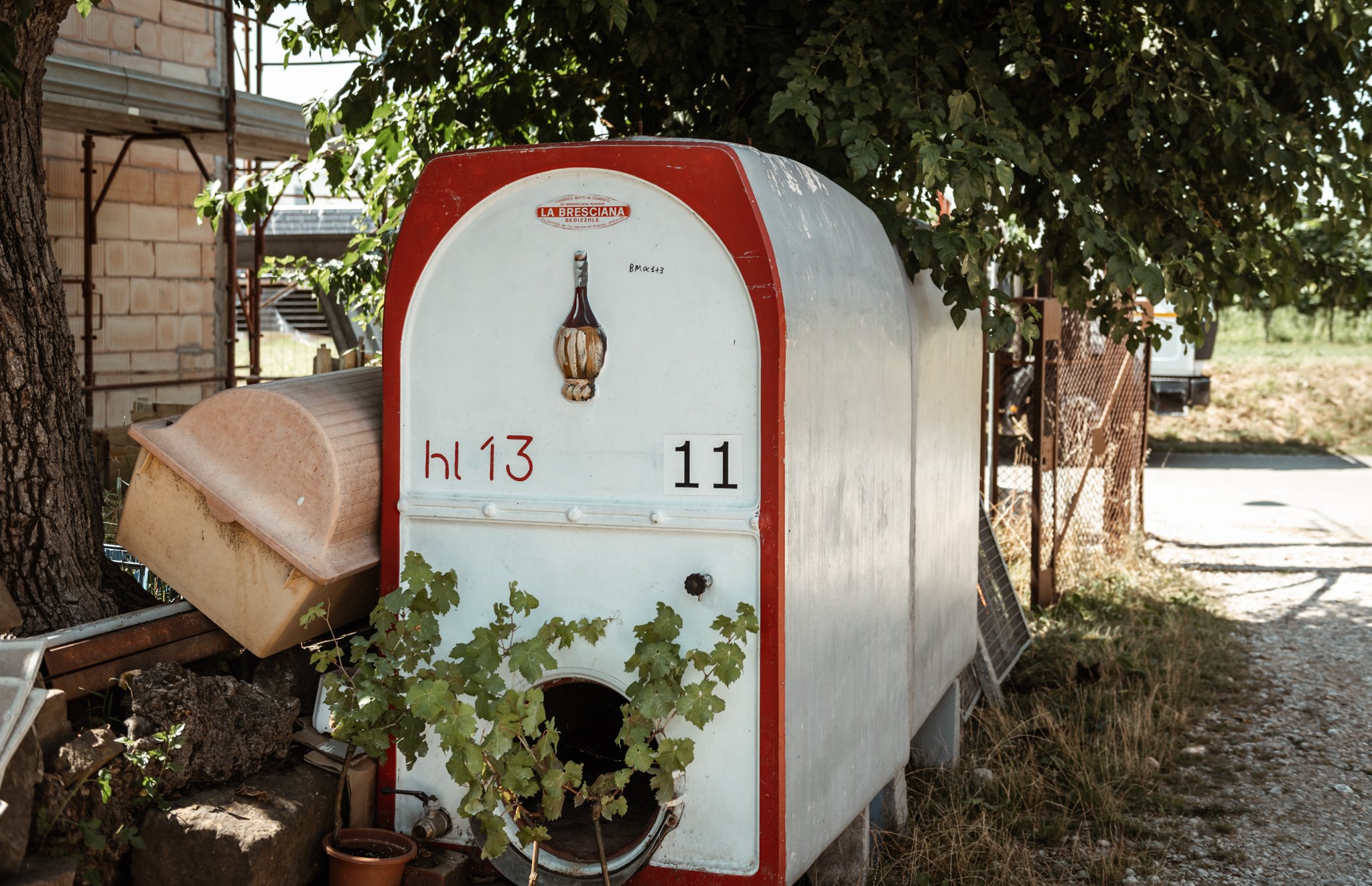
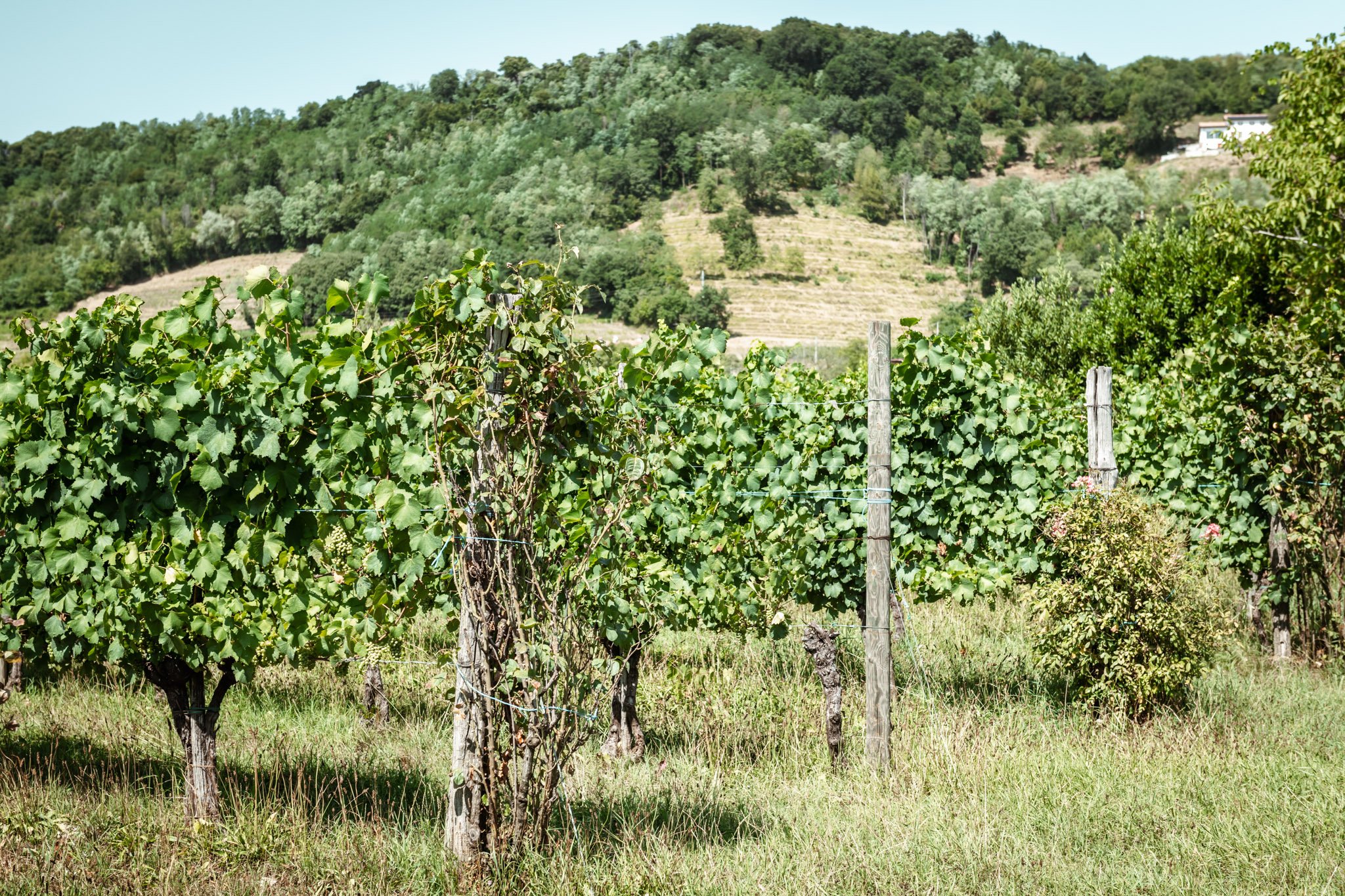
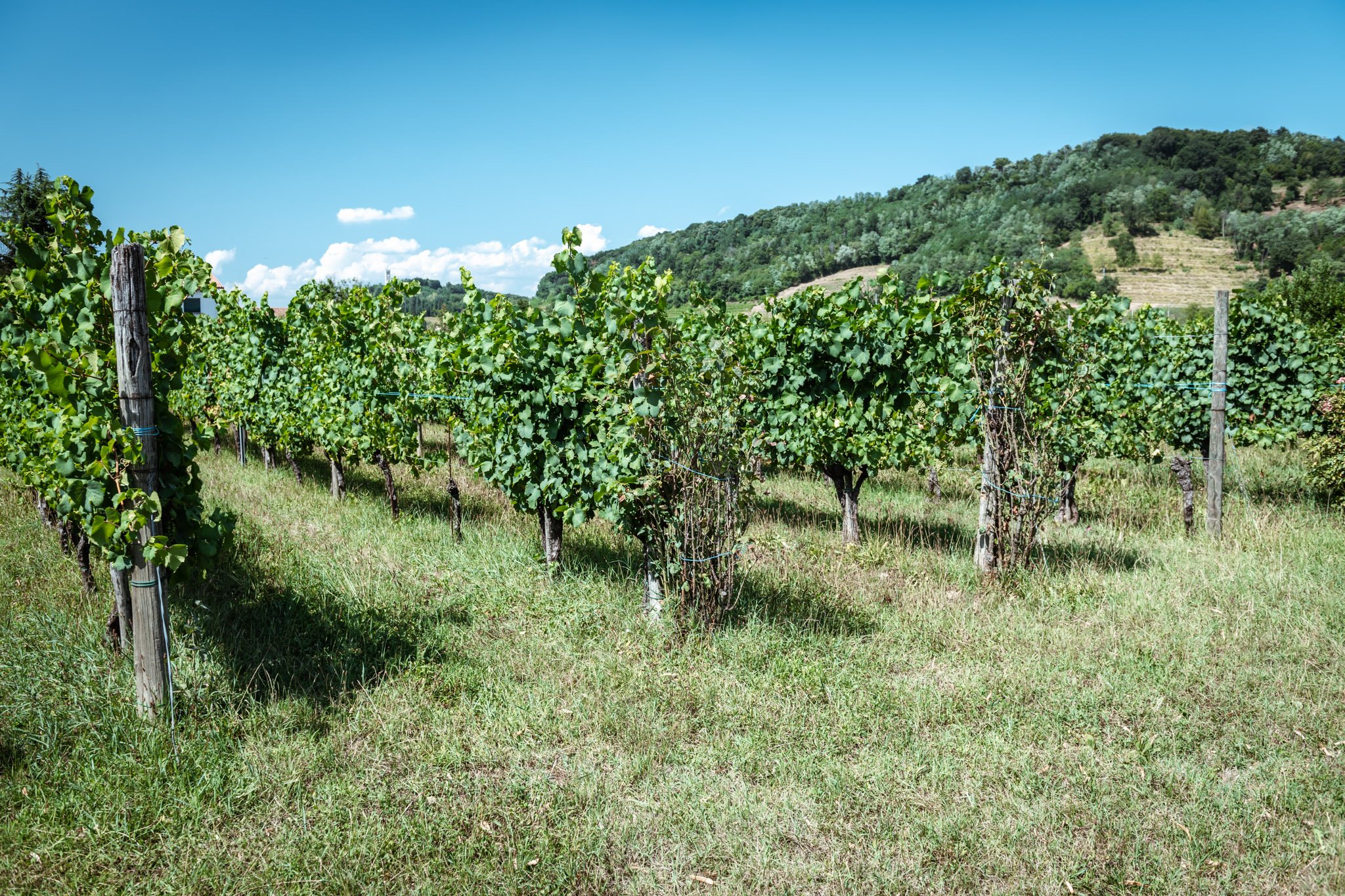
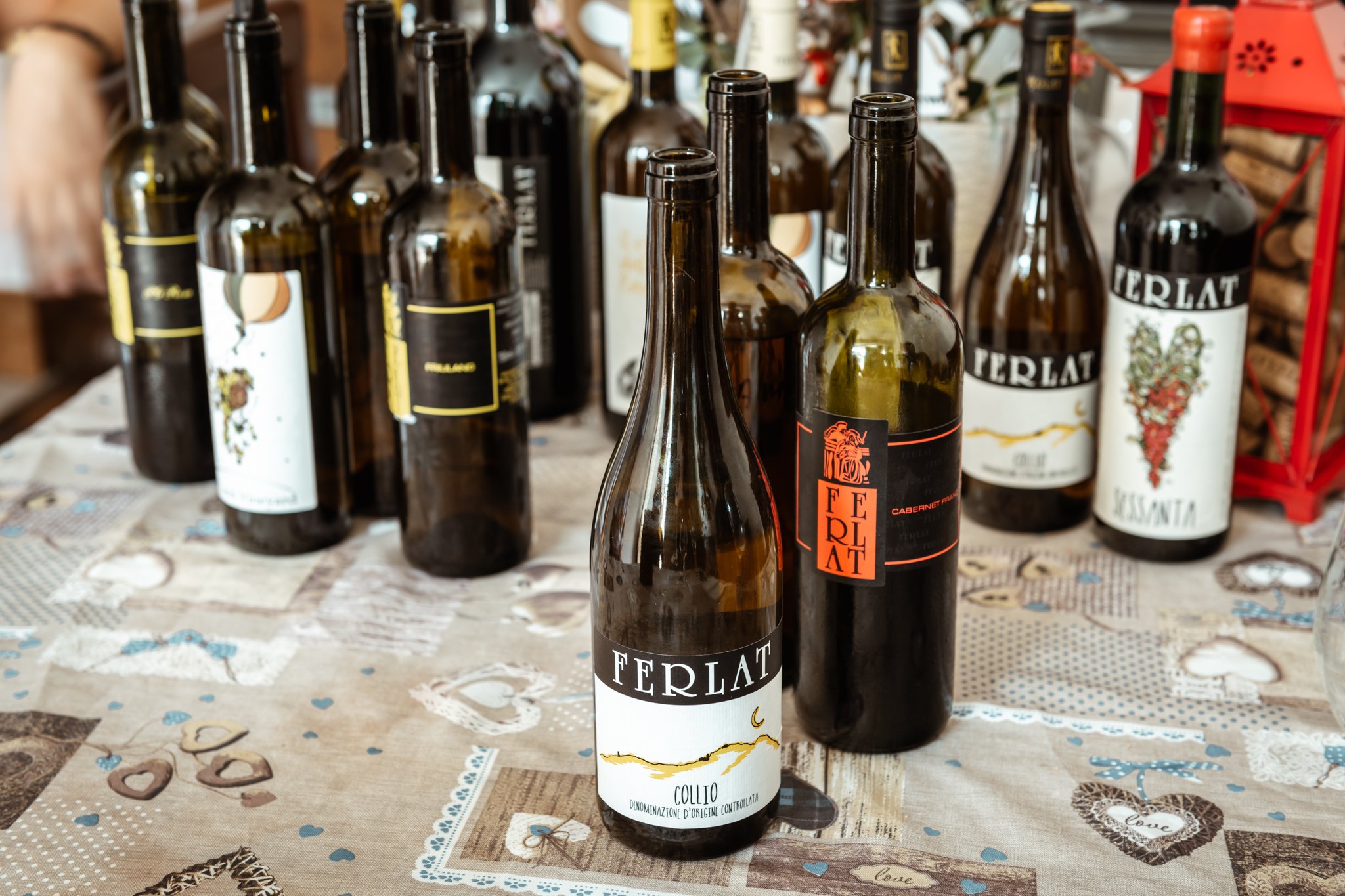
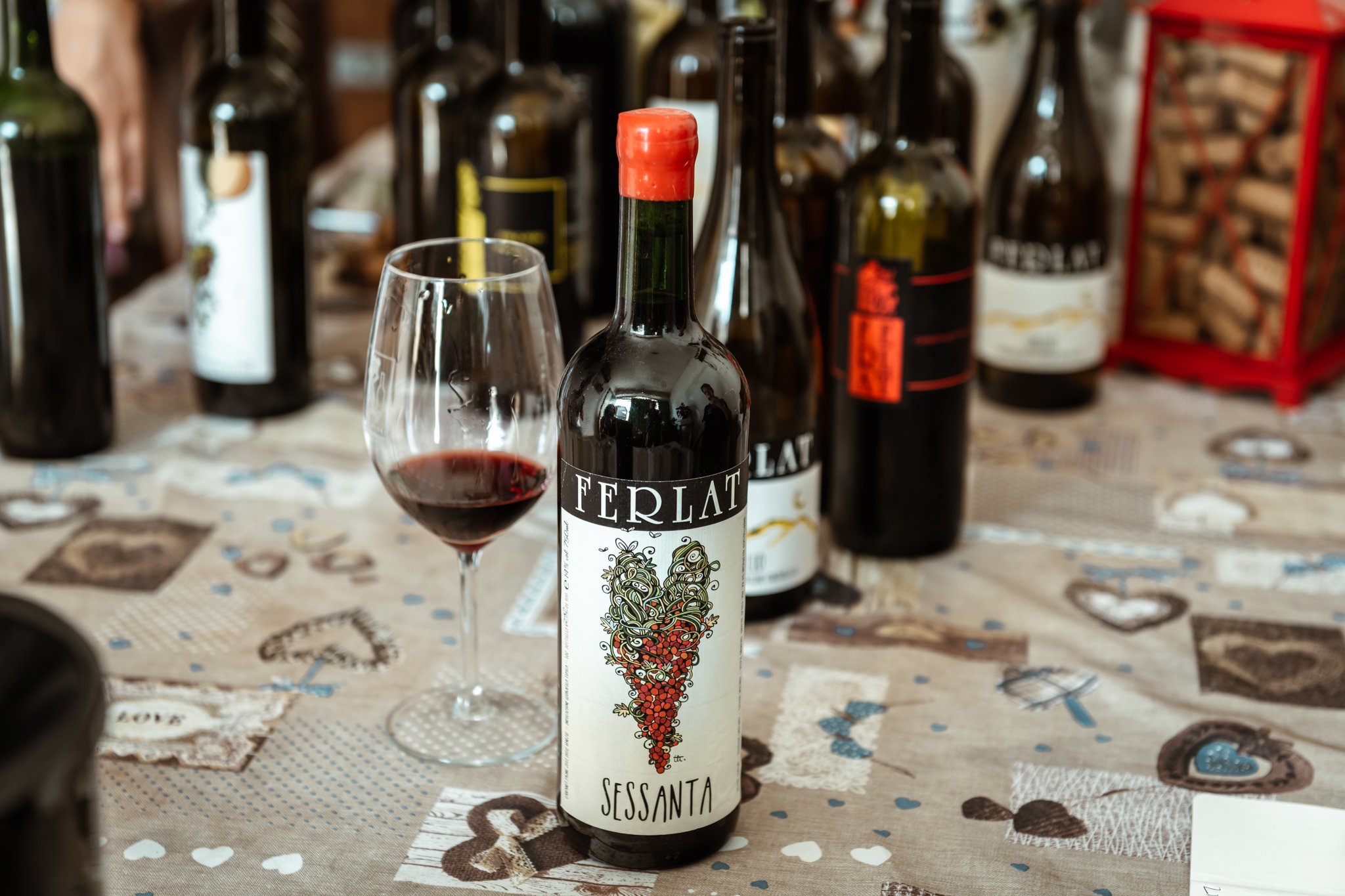
ferlat
Who: Moreno Ferlat & Federica Tabacchi
Where: Cormons (Friuli Venezia Giulia, Italy)
What grapes: Ribolla Gialla, Pinot Grigio, Sauvignon, Friulano, Pinot Bianco, Chardonnay, Malvasia Istriana, Moscato Giallo, Cabernet Franc, Merlot,
Key facts: Two cool ‘kids’ making natural and distinct wines in the renowned DOC Friuli Isonzo. Farming organically and making wine naturally, these wines are aromatic and full of the flavors of the region.
Website: https://www.ferlatvini.it/
Instagram: @ferlat_vini
Ferlat Friulano Friuli Isonzo DOC
Viticulture: Certified organic / Natural
Soil type: Chalk, layered with white gravel
Grapes: Friulano
Method of Fermentation: Destemming-crushing, short maceration of the must with the skins (48 h) followed by a soft pressing. Alcoholic fermentation is triggered by using indigenous yeasts (naturally present on the skins and in the cellar) in concrete tanks. Naturally carried out malolactic fermentation, also in concrete tanks. Subsequent refinement and elevation with periodic batonnage of the noble lees up to just before bottling. Bottling takes place in the May following the harvest.
To my palate it is the most straightforward of the Ferlat wines that we are importing this year. Nothing wild, just a tasty, mid-weight white to drink all through the torment of summer, with ocean fish. — JM
Ferlat “PG Rosa” Pinot Grigio Venezia Giulia IGT
Viticulture: Certified organic / Natural
Soil type: Chalk, layered with white gravel
Grapes: Pinot Grigio
Method of Fermentation: The grapes are de-stemmed, pressed and left to macerate in concrete tanks where alcoholic fermentation begins. The juice remains in contact with the skins for a variable period based on the evolution of the wine (a part 2 days of maceration, a part 4 days and a part 7 days). Subsequently, the partially fermented grape must is separated and the skins are pressed in order to extract the remaining part which is then joined in order to complete the alcoholic fermentation together. Also in this case the wine is refined on the fine lees in order to give greater olfactory and gustatory complexity. Malolactic fermentation is possibly avoided so as not to affect the freshness and liveliness of the wine. Bottling takes place in the March following the harvest.
As Rosa implies, the wine is dark. Too dark for the DOC, in fact. Planted at a density of 5,000 vines per hectare and harvested at a yield of 55hl/ha, it’s a substantial wine. Rosa spends two days macerating on skins in stainless steel tanks. It didn’t go through malolactic fermentation. The wine is juicy, fresh, and really good. Pretty neutral aromatically, but very fruit-forward on the palate. Rhubarb, tart strawberry, fine tannin. — JM
Ferlat Sauvignon Venezia Giulia IGT
Viticulture: Certified organic / Natural
Soil type: Chalk, layered with white gravel
Grapes: Sauvignon
Method of Fermentation: Destemming-crushing and maceration for 48 hours. Soft pressing trying to keep the contact of the crushed grapes with oxygen very limited, alcoholic fermentation in steel tanks managing the temperature and using indigenous yeasts. Subsequent refinement on noble lees until just before bottling with very limited decanting and in the total absence of oxygen. Malolactic fermentation avoided to keep the natural freshness and acidity of the wine intact. Bottling takes place in the month of March following the harvest.
The grapes from the two parcels are significantly different in appearance and character. The older vines are three different clones of Sauvignon that were imported from France. The bunches are big, and winged. They require an earlier harvest date. The younger vines are a clone that was developed in Friuli. They have a looser cluster, and a tendency toward overripeness. The wine smells of elderflower, passion fruit, and ripe grapefruit. Some red berry aromas sneak in as well. It has a lip-smacking appeal. — JM
Ferlat “Grame” Malvasia Venezia Giulia IGT
Viticulture: Certified organic / Natural
Soil type: Chalk, layered with white gravel
Grapes: Malvasia Istriana
Method of Fermentation: After destemming-crushing, the crushed grapes (must and skins) are transferred to concrete tanks where alcoholic fermentation begins using indigenous yeasts (present on the grape skins and in the cellar). Maceration lasts 15 days during which punching down is carried out to immerse the cap and keep the skins moist. At the end of the contact it is drawn off and the skins undergo a slight pressure to extract the small part of juice trapped in them. At this point the wine in fermentation is decanted into used barriques and tonneaux where it completes the alcoholic fermentation. At the end of the alcoholic fermentation the malolactic fermentation takes place with indigenous bacteria. Subsequently, the fine lees are mixed continuously for about 11 months. After this period, the various barriques are blended and placed together for about a month before bottling, which usually takes place in December, in the year following the harvest.
Graeme is the name of the vineyard. It’s also the name of the wild grass that is illustrated on this wine’s wonderfully stylish label. Really nice aromas of pepper and juniper are in the foreground. Moreno and Federica like it with Thai food, or old blue cheese, or fish with an olive-and-caper sauce. I’m anxious to attempt all three pairings at home. — JM
Ferlat Ribolla Gialla Venezia Giulia IGT
Viticulture: Organic / Natural
Soil type: Chalk, layered with white gravel
Grapes: Ribolla Gialla
Method of Fermentation: The grapes are gently crushed. The juice soaks on the skins for 48 hours. Wild yeast start the fermentation. The wine ferments in temperature-controlled stainless steel tanks. After fermentation, the wine rest on the fine lees until March of the following year. Intermittent battonage occurs.
The estate’s seven hectares have been certified organic since 2014. The winery has been around since 1950, but was essentially reborn in 2000, emerging from the friendship and collaboration of oenologists Moreno Ferlat and Federica Tabacchi. I tasted the wines for the first time in 2017, at Sorgente del Vino, a scruffy little natural wine show in Piacenza. I wound my way up from Sicily primarily to catch up with Chiara Penanti from Oltretorrente. After tasting the Timorasso of my wildest dreams at her table, Chiara dragged me across the convention hall to meet Ferlat. Penanti was impressed by Moreno and Federica’s wines. And she must have an affinity for their origin story. In scale, age, and ambition, the two farms are remarkably similar. These are younger (than me) people trying to do something natural and new, in relatively sleepy winegrowing communities.
I was into it. The wines tasted good. We needed Ferlat’s vivid whites in our warehouse. But Covid came along, and I was unwilling to start importing a first wave of bottles without at least a cursory farm visit. So I sat on my hands. We waited for years.
In the summer of 2021 I made it back to Friuli, with a sliver of time in my itinerary available to meet with Moreno and Federica. I showed up at an interesting moment. The cellar was in the middle of some pretty active construction! Hammering, piles of stone and dust, the pouring of concrete. I watched my step.
It was sweltering, inside and out. We took a walk. The vineyard closest to the winery was planted in 1974. Essentially it’s at the end of the block, bordering a main provincial road. It’s a rented field that Ferlat started utilizing in 2019 for the “No Land Vineyard” bottling (see below.) Considering the short period of healthy farming, the wines made from it are already very promising.
Federica and Moreno’s most important vineyards are in Isonzo, a terrain shaped, at least in part, by the Isonzo river. The soil is ponca, a form of sandstone. At a walking distance from the winery, the DOCs of Isonzo and Collio are separated by that road I mentioned. Not by a mountain, or a river, or some other natural division. The areas were split up by the regional wine police in 1968. Seems a little arbitrary.
The winery is seven kilometers from the Isonzo river (and 600 meters from a different river.) The terrain looks alluvial. Ferlat plant indigenous cover crops in their fields. They don’t disturb the soil much. Instead of digging, they choose to look at the natural grasses, and use them as a bellwether to understand what is happening underneath. Ferlat use a ripper, essentially a big iron plow, to move ground cover if they need to facilitate the evaporation of water. Italy seems pretty dry these days. My guess is they don’t use it much.
I bet one of them has a dog-eared copy of The One Straw Revolution on their bedside table.
The sun was resting six inches above my forehead. The possibility of melting truncated our vineyard tour. Let's find some shadows!
The office/tasting room was an oven. But the wines were chilled! And quite refreshing.
I’m glad the winery is growing. As you’ll notice in the notes below, there aren’t millions of bottles made at Ferlat. We’ll hope for slow-but-steady growth in years to come. I’d like to enjoy their wines in North Carolina with some degree of regularity.





